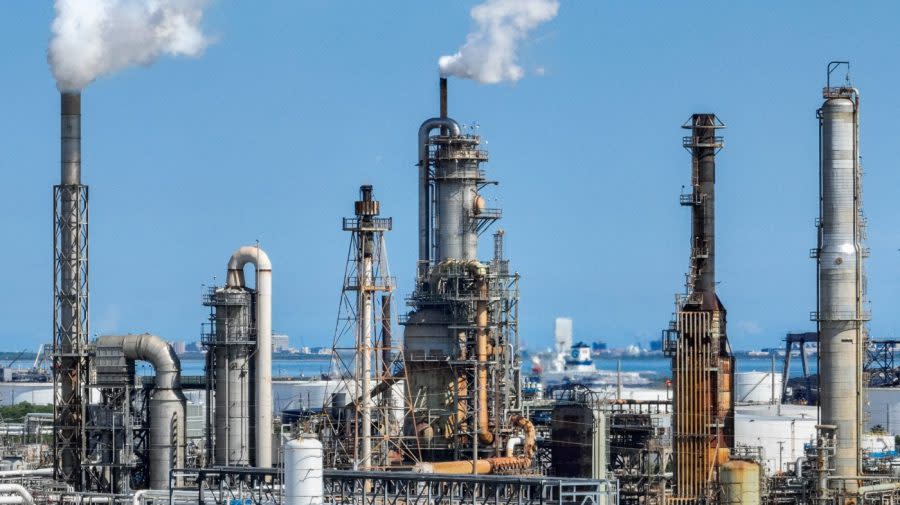Texas producing fossil fuels at record levels amid heat wave

At the brink of what may be the hottest summer on record, the Texas oil and gas industry is pumping out planet-heating fuels at record levels, a new report has found.
Estimates from the Texas Oil and Gas Association (TXOGA) released Monday found the state umped out a record 5.7 million barrels per day of crude oil in May, and it sold a record 32 billion cubic feet of gas.
Those record numbers come out as much of the U.S. experiences its longest heat wave in decades, with more than 135 million Americans at risk from extreme heat. Climate change caused by the burning of fossil fuels is making heat waves longer and hotter, according to conservative climate advocacy group C-Change Conversations.
The May TXOGA estimates come on top of official oil and gas production numbers out this week from the U.S. Energy Information Agency (EIA).
The EIA found that Texas produced 28.2 billion cubic feet of methane gas per day in March — less than half of which was used by the state’s consumers.
Texas-based industry and the state power grid used 12.5 billion cubic feet — 44 percent — of the total gas produced in March, with most of the rest going to export.
Those exports netted the industry an estimated $56.8 billion from January to March, according to the EIA.
Because it burns cleaner than coal, natural gas’s supporters have for decades touted it as a greener alternative to other fossil fuels and argued it is a more climate-friendly energy source to lean on amid the transition to renewables. But it has raised concerns from environmentalists and communities near terminals, largely due to leaks at the wellhead and along pipelines.
Natural gas is predominantly composed of methane, which heats the atmosphere up to 80 times more intensely than carbon dioxide, the leading climate contaminant. When the methane leaks — which it is notoriously prone to do — natural gas’s climate advantage over coal plants ebbs.
How much gets leaked is a matter of controversy.
On the high end, a 2020 study in Science found that 3.7 percent of the gas extracted in the Permian Basin — Texas’s largest producing region — leaks or gets vented into the atmosphere. And a 2022 study of the corner of the Permian in New Mexico found a leakage rate of almost 10 percent.
On the low side, a natural gas advocacy group found the rate is more like 0.12 percent.
If the 3.7 percent leak rate is correct, then Texas vented about 70,000 metric tons of methane into the atmosphere every day in May — the annual equivalent of the tailpipe emissions from 420,000 cars, released every day, according to EPA data.
For all of May, that leakage rate would have been the equivalent of the annual emissions from 14 coal plants.
And if the high New Mexico numbers are right, it would have been equivalent to 37.8 coal plants operating for six months.
If the gas industry’s low estimates are correct, meanwhile, May contributed roughly as much heat to the planet as a coal plant running for half a year.
All of those figures would only include emissions before any of the fossil fuels are burned.
Burning crude oil releases about 78 percent as much carbon dioxide as coal, and transportation — which almost exclusively runs on oil — is the second-leading contributor to climate change after the power sector.
Copyright 2024 Nexstar Media, Inc. All rights reserved. This material may not be published, broadcast, rewritten, or redistributed.
For the latest news, weather, sports, and streaming video, head to The Hill.

